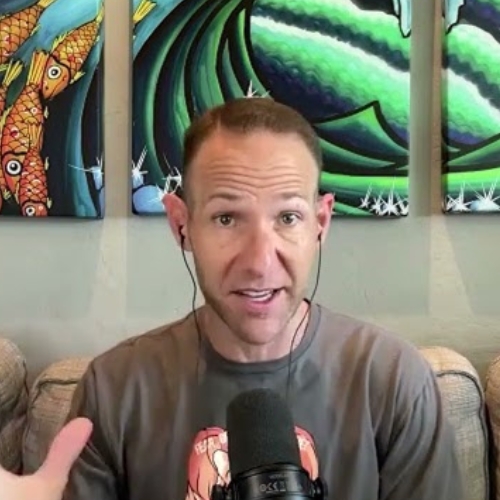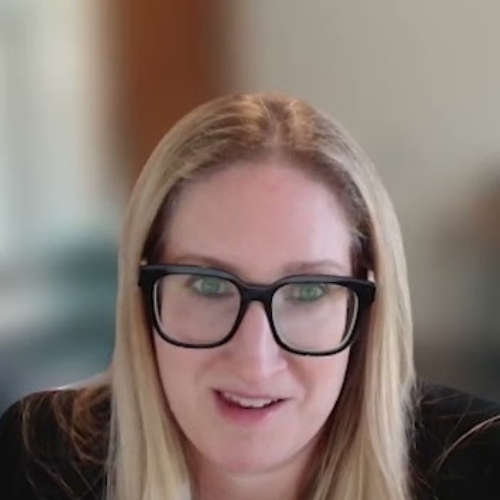Phone: (602) 840-0681 | Fax: (602) 957-1570 Bill Pay

Platelet Rich Plasma Therapy
Platelet Rich Plasma Therapy
PRP in Mesa, Phoenix, Scottsdale, Gilbert, and Peoria
Desert Spine and Sports Physicians is the leading provider of non-surgical musculoskeletal therapies including the popular and proven regenerative therapy, Platelet Rich Plasma (PRP). We have been delivering PRP injections for over a decade, and it is our preferred regenerative treatment option for musculoskeletal injury because it is safe and effective. This therapy utilizes a concentrated form of platelets from a patient’s own blood, which have growth factors that accelerate the body’s natural healing process, leading to tissue repair and regeneration. PRP reduces pain and improves function in various musculoskeletal conditions, including joint, tendon, and ligament injuries.
How PRP Works
1. Joint Pain
PRP therapy can be used to alleviate joint pain, especially in conditions like osteoarthritis. Osteoarthritis is characterized by the breakdown of joint cartilage, leading to pain and reduced joint function. When PRP is injected into a joint, it is believed to:
- Promote Healing: The growth factors in PRP can stimulate the production of new cartilage cells, which aids in repairing damaged cartilage and promoting tissue regeneration within the joint.
- Reduce Inflammation: PRP’s anti-inflammatory properties can help to decrease the inflammation in the joint, which is often associated with pain and reduced mobility in conditions like arthritis.
- Enhance Lubrication: PRP injections may improve the synovial fluid’s viscosity and lubricating properties within the joint, which alleviates pain, reduces friction, and enhances joint mobility.
2. Tendon and Ligament Pain
PRP therapy is also commonly used to treat tendon-related injuries, such as tendonitis or tendinosis/tendinopathy, and ligament injuries, such as sprains or strains. PRP therapy for tendon and ligament pain works by:
- Enhancing Healing: The growth factors in PRP enhance collagen production, which heals injuries and promotes the growth of new, healthier tissue in damaged tendons and ligaments. This is particularly useful in chronic issues where healing is slow.
- Reducing Pain: Just as in joint pain, the anti-inflammatory properties of PRP can reduce pain by reducing swelling and irritation in and around the affected tendon or ligament.
- Strengthening Tissue: PRP stimulates the production of collagen, a key protein for tendon and ligament strength and function. Increased collagen production leads to improved tissue strength and stability and, therefore, reduced risk of re-injury.
How PRP is Made
1. Blood Collection
To create PRP, a small sample of the patient’s blood is taken, usually from a vein in the arm. The blood is then processed to separate its components.
2. Centrifugation
The collected blood is placed in a centrifuge, a machine that spins rapidly to separate different components of the blood based on their densities in a two-step process. This process separates the platelets with their growth factors from the other blood components, such as red blood cells and neutrophils.
3. Platelet-Rich Plasma
After centrifugation, the concentrated platelets, approximately 8x the amount of platelets as compared to whole blood, are separated from the rest of the blood. This concentrated solution is the Platelet-Rich Plasma.
4. Application
The PRP can then be injected into the site of injury or treatment. It is vital that PRP is injected with image guidance to ensure the therapy is delivered to the proper site.
It is important to note that while PRP therapy holds promise, its effectiveness can vary depending on factors such as the specific condition being treated, the severity of the condition, and the patient’s overall health. PRP therapy is generally considered safe because it utilizes the patient’s own blood components, reducing the risk of allergic or immune reactions. However, like any medical procedure, there can be potential risks and side effects, such as infection, pain at the injection site, or no significant improvement in symptoms.
If you are considering PRP therapy for your pain, it is essential to consult an expert in the field of musculoskeletal medicine who can assess your condition and determine whether PRP is a suitable option for you. Here at Desert Spine and Sports Physicians, our Physicians are fellowship-trained in Advanced Interventional Procedures, and together, we have garnered 38 “Top Doc” Phoenix Magazine awards. We have safely performed over 300,000 musculoskeletal injections and deliver all of our procedures accurately under image guidance such as ultrasound or fluoroscopy. If you are interested in knowing more about PRP therapy, we will schedule you for an initial visit billed to the insurance carrier (if contracted) to evaluate your issue and discuss how to prepare for the PRP injection. The PRP therapy, which is not covered by insurance and costs $900, will then be injected at the follow-up appointment.
At Desert Spine and Sports Physicians, we are constantly evaluating the best treatment options for our patients, and we are happy to discuss what really works when it comes to regenerative musculoskeletal medicine. We look forward to helping you manage your pain and injury and return you back to function. To book with us, please contact us at info@desertspineandsports.com, or call us at 602-840-0681.
-
Tennis Elbow Relief with PRP Injections: Joe's Story

-
From Back Pain to Back to an Active Life: How PRP Injections Changed Helena's Life

-
Jennifer's Story of Knee Pain Relief with PRP Injections at Desert Spine and Sports Physicians

-
PRP Patient:
Craig G's PRP Injection Journey

-
PRP Patient:
Carol's Journey with PRP Therapy

PRP References
ACHILLES
– TENFORDE, A., ROBINSON, D., BORG-STEIN, J., BORGSTROM, H. AND SINGH, J.R. (2020), EXTRACORPOREAL SHOCKWAVE THERAPY VERSUS PLATELET-RICH PLASMA FOR ACHILLES TENDINOPATHY. PM&R: THE JOURNAL OF INJURY, FUNCTION AND REHABILITATION, 12: 1169-1176. HTTPS://DOI.ORG/10.1002/PMRJ.12498
CMC
– HASLEY IB, BIES MM, HOLLMAN JH, CARTA KG, SELLON JL, BRAULT JS. PLATELET-RICH PLASMA INJECTION FOR THUMB CARPOMETACARPAL JOINT OSTEOARTHRITIS. ARCH REHABIL RES CLIN TRANSL. 2023;5(1):100257. PUBLISHED 2023 JAN 29. DOI:10.1016/J.ARRCT.2023.100257
ELBOW
– TANG S, WANG X, WU P, ET AL. PLATELET-RICH PLASMA VS AUTOLOGOUS BLOOD VS CORTICOSTEROID INJECTIONS IN THE TREATMENT OF LATERAL EPICONDYLITIS: A SYSTEMATIC REVIEW, PAIRWISE AND NETWORK META-ANALYSIS OF RANDOMIZED CONTROLLED TRIALS. PM R. 2020;12(4):397-409. DOI:10.1002/PMRJ.12287
GTPS
– FITZPATRICK J, BULSARA MK, O’DONNELL J, ZHENG MH. LEUCOCYTE-RICH PLATELET-RICH PLASMA TREATMENT OF GLUTEUS MEDIUS AND MINIMUS TENDINOPATHY: A DOUBLE-BLIND RANDOMIZED CONTROLLED TRIAL WITH 2-YEAR FOLLOW-UP. AM J SPORTS MED. 2019;47(5):1130-1137. DOI:10.1177/0363546519826969
HIP
– DALLARI D, STAGNI C, RANI N, ET AL. ULTRASOUND-GUIDED INJECTION OF PLATELET-RICH PLASMA AND HYALURONIC ACID, SEPARATELY AND IN COMBINATION, FOR HIP OSTEOARTHRITIS: A RANDOMIZED CONTROLLED STUDY. AM J SPORTS MED. 2016;44(3):664-671. DOI:10.1177/0363546515620383
– LIM A, ZHU JB, KHANDUJA V. THE USE OF INTRA-ARTICULAR PLATELET-RICH PLASMA AS A THERAPEUTIC INTERVENTION FOR HIP OSTEOARTHRITIS: A SYSTEMATIC REVIEW AND META-ANALYSIS [PUBLISHED ONLINE AHEAD OF PRINT, 2022 JUN 7]. AM J SPORTS MED. 2022;51(9):3635465221095563. DOI:10.1177/03635465221095563
– KRAEUTLER MJ, HOUCK DA, GARABEKYAN T, MILLER SL, DRAGOO JL, MEI-DAN O. COMPARING INTRA-ARTICULAR INJECTIONS OF LEUKOCYTE-POOR PLATELET-RICH PLASMA VERSUS LOW-MOLECULAR WEIGHT HYALURONIC ACID FOR THE TREATMENT OF SYMPTOMATIC OSTEOARTHRITIS OF THE HIP: A DOUBLE-BLIND, RANDOMIZED PILOT STUDY. ORTHOP J SPORTS MED. 2021;9(1):2325967120969210. PUBLISHED 2021 JAN 20. DOI:10.1177/2325967120969210
KNEE
– OEDING JF, VARADY NH, FEARINGTON FW ET AL. PLATELET-RICH PLASMA VERSUS ALTERNATIVE INJECTIONS FOR OSTEOARTHRITIS OF THE KNEE: A SYSTEMATIC REVIEW AND STATISTICAL FRAGILITY INDEX-BASED META-ANALYSIS OF RANDOMIZED CONTROLLED TRIALS AM J SPORTS MED. 2024 FEB 29:3635465231224463. DOI: 10.1177/03635465231224463.
– SUBRAMANYAM K, ALGUVELLY R, MUNDARGI A, KHANCHANDANI P. SINGLE VERSUS MULTI-DOSE INTRA-ARTICULAR INJECTION OF PLATELET RICH PLASMA IN EARLY STAGES OF OSTEOARTHRITIS OF THE KNEE: A SINGLE-BLIND, RANDOMIZED, SUPERIORITY TRIAL. ARCH RHEUMATOL. 2021;36(3):326-334. PUBLISHED 2021 JAN 14. DOI:10.46497/ARCHRHEUMATOL.2021.8408
– FILARDO G, PREVITALI D, NAPOLI F, CANDRIAN C, ZAFFAGNINI S, GRASSI A. PRP INJECTIONS FOR THE TREATMENT OF KNEE OSTEOARTHRITIS: A META-ANALYSIS OF RANDOMIZED CONTROLLED TRIALS. CARTILAGE. 2021;13(1_SUPPL):364S-375S. DOI:10.1177/1947603520931170
– MIGLIORINI F, DRIESSEN A, QUACK V, ET AL. COMPARISON BETWEEN INTRA-ARTICULAR INFILTRATIONS OF PLACEBO, STEROIDS, HYALURONIC AND PRP FOR KNEE OSTEOARTHRITIS: A BAYESIAN NETWORK META-ANALYSIS. ARCH ORTHOP TRAUMA SURG. 2021;141(9):1473-1490. DOI:10.1007/S00402-020-03551-Y
– HAN Y, HUANG H, PAN J, ET AL. META-ANALYSIS COMPARING PLATELET-RICH PLASMA VS HYALURONIC ACID INJECTION IN PATIENTS WITH KNEE OSTEOARTHRITIS. PAIN MED. 2019;20(7):1418-1429. DOI:10.1093/PM/PNZ011
– KON E, BUDA R, FILARDO G, ET AL. PLATELET-RICH PLASMA: INTRA-ARTICULAR KNEE INJECTIONS PRODUCED FAVORABLE RESULTS ON DEGENERATIVE CARTILAGE LESIONS. KNEE SURG SPORTS TRAUMATOL ARTHROSC. 2010;18(4):472-479. DOI:10.1007/S00167-009-0940-8
– BELK JW, KRAEUTLER MJ, HOUCK DA, GOODRICH JA, DRAGOO JL, MCCARTY EC. PLATELET-RICH PLASMA VERSUS HYALURONIC ACID FOR KNEE OSTEOARTHRITIS: A SYSTEMATIC REVIEW AND META-ANALYSIS OF RANDOMIZED CONTROLLED TRIALS. AM J SPORTS MED. 2021;49(1):249-260. DOI:10.1177/0363546520909397
PLANTAR FASCIA
– KALIA RB, SINGH V, CHOWDHURY N, JAIN A, SINGH SK, DAS L. ROLE OF PLATELET RICH PLASMA IN CHRONIC PLANTAR FASCIITIS: A PROSPECTIVE STUDY. INDIAN J ORTHOP. 2020;55(SUPPL 1):142-148. PUBLISHED 2020 OCT 6. DOI:10.1007/S43465-020-00261-W
SHOULDER
– NEJATI P, GHAHREMANINIA A, NADERI F, GHARIBZADEH S, MAZAHERINEZHAD A. TREATMENT OF SUBACROMIAL IMPINGEMENT SYNDROME: PLATELET-RICH PLASMA OR EXERCISE THERAPY? A RANDOMIZED CONTROLLED TRIAL. ORTHOP J SPORTS MED. 2017;5(5):2325967117702366. PUBLISHED 2017 MAY 19. DOI:10.1177/2325967117702366
– PRODROMOS CC, FINKLE S, PRODROMOS A, CHEN JL, SCHWARTZ A, WATHEN L. TREATMENT OF ROTATOR CUFF TEARS WITH PLATELET RICH PLASMA: A PROSPECTIVE STUDY WITH 2 YEAR FOLLOW-UP. BMC MUSCULOSKELET DISORD. 2021;22(1):499. PUBLISHED 2021 MAY 29. DOI:10.1186/S12891-021-04288-4
SI JOINT
– LING JF, WININGER AE, HIRASE T. PLATELET-RICH PLASMA VERSUS CORTICOSTEROID INJECTION FOR LUMBAR SPONDYLOSIS AND SACROILIAC ARTHROPATHY: A SYSTEMATIC REVIEW OF COMPARATIVE STUDIES. CUREUS. 2021;13(3):E14062. PUBLISHED 2021 MAR 23. DOI:10.7759/CUREUS.14062
Patient Testimonial
"Had a great experience. Gave a lot of easy to understand info about what was going on. He helped keep me distracted from the tests by letting me play some music and having a nice friendly chat."
Nicholas N
"I have seen Dr. Thai Vu a few times and I am impressed with his knowledge and thorough exams. He answers all of my questions with clarity that I have regarding my spine health. I highly recommend him and this clinic."
Kira P
"Office staff is quick to respond and very friendly. Dr Vu is extremely knowledgeable, thorough and gentle. Takes the time to answer your questions honestly and puts any concerns and/or fears to rest. I highly recommend this office to anyone looking for their services. Don’t waste your time looking elsewhere."
Rosie G
"Everyone from the receptionist, to my Dr assistant were professional and kind. Dr. Ralhan was amazing! He was very personable as well as professional. He was very thorough in his evaluation, very clear in his explanations, and truly listened to what i had to say. Answered any and all questions I had and took his time. I never felt like I was being rushed out of there. I truly felt like he was treating me, not my symptoms and that he had my health and best interests in mind. Couldn't be more pleased with Dr. Ralhan and Desert Spine."
Mark M
"Dr. Ralhan is the best, he makes my life with Sciatica bearable. I have anxiety so whenever I get my injections he makes me feel comfortable When we are in the procedure room he doesn’t do anything to me until he tells me first. I always know what’s going to happen and how it’s going to feel. His staff is very nice, always smiling very attentive."
Debbie R
"Dr. Andrew Minkley is awesome! He’s very down to earth and made a very uncomfortable procedure as comfortable as possible. He explained the procedure to me ahead of time so that I knew exactly what to expect. I will highly recommend him to anyone who needs this service."
Darla G
"Andrew is fantastic! Listened, tried different movements to see what portion of my body was impacted by different movements, and gave solutions. I highly recommend. The entire staff is courteous, nice, and helpful"
Christa P
"Just had another appt. With Dr. Le. I will echo my past reviews. Amazing. Dr.Le is amazing. So kind and caring and understanding, with a great sense of humor. She take the best care of her patients. Thank you again Dr. Le you and the staff are AMAZING"
Jim H
"Dr. Page was awesome! I came here for a nerve study test to confirm carpultunnel. He explained every step before doing it and while the procedure was taking place. Made me feel much more comfortable and relaxed. Thank you, Dr. Page!!"
Niki G
"I took my 13 yr old athlete daughter in to see Dr Page for a knee injury. He was wonderful! He was very knowledgeable, had a great bedside manner and made my daughter very comfortable with the exam. I would highly recommend Desert Spine and Sports!"
Danil B
"Dr. Susan Sorosky was a good listener, asked questions to better understand my symptoms, answered my questions, and provided recommendations to improve my condition. She also promoted the patient portal as a means to get any other questions answered."
Robert H
"Dr Sorosky and her PA Susana are awesome ,there care in really trying to get your pain calmed down while also doing diagnostic therepy to really evaluate you as a person ,has been amazing. I came in with a complicated back and im still a work in progress but there knowledge and experience has been going as smoothly as possible! Absolutely a 100% difference in experience compared to my last. Always listening and actually caring about correctly getting to the bottom of the issue even if it takes a few different changes because every person is unique and different in issues that need addressed!"
Lisa S
"I have been seeing Dr Susan for at least the past 10 to 12 years. She has always suggested what she thinks is best for me. She actually gives choices. Sometimes it is another doctor."
Setve G
"Dr S was focused and did a neurological examination that pointed out things about what I was seeing that related to the anatomy of my injury. She is brilliant and kind and down to earth. Her entire staff is compassionate and professional."
Sand W
"Both Susan and Brad Sorosky are great Doctors. I saw Susan in 2011 found something wrong with me and sent me to another Great Dr I've been seeing since 2012. A MRI was done on spine a couple months ago, he was not able to help with it. He referred me to Brad and Susan Sorosky who got me in right away and started to help me out within a few week's. They are great team :-D"
Tara C
"Everyone is very caring and efficient. And Dr Susana Leyva and Dr Brad Sorosky seem to really care about your pain."
Julie S
"My husband and I have seen Dr Brad Sorosky and Susanna Leyva for the past few years and their medical attention to our needs has been and continues to be exemplary. Whether it’s chronic back or knee issues, they’ve helped us not only manage our pain but put us on the right track to live pain free. Wholeheartedly recommend them."
"We were very pleased with our visit. We had the pleasure of seeing Dr. Sorosky, he was amazing and really took the time to help us figure out our next steps for my daughter. I will definitely recommend him and his office to anyone."
Kerri H
"Desert Spine and Sports I have been with them for over 15 years and the doctors their have been the best in controlling my painfully degenerative back disease and other conditions. I am so happy I found them. I can easily give them 5 stars."
Jusy J
"My questions and concerns were addressed to my complete satisfaction. I will be returning to Desert Spine & Sports when I need further treatment."
Lorene R
"Doctor Hott was the first knowledgeable doctor I think I have visited with that layed down a simple plan for me. He truly is a exceptional doctor who I think cares for us as patients. That’s rare these days. Thanks again!"
Ronald B
"Dr. Ralhan and Joshua Reedy, PA are clear communicators, easy to speak with, answers questions and gives explanations for plan of care. My husband felt genuine connection as health care provider. Has been very frustrating journey to relieve his pain. So hopeful for creative intervention to improve quality of life."
Grace N
"The staff here has been nothing but compassionate. I saw Dr. Ralhan who spent time listening to my concerns and medical history as a whole. I am not used to doctors, especially specialists, actively listening to my concerns and goals."
Amber E
"Have seen Dr. Tima Le on a few occasions for treatments if my stenosis. She is absolutely wonderful. Very knowledgeable, very compassionate, very amiable. Actually usually leave her with a smile on my face. Highly recommend"
Ranne S
"Dr Le and staff are great. Her knowledge is amazing. Her communication skills are awesome. I would recommend DR Le 100%"
Steve W
"Very professional, efficient office. Dr Le is very compassionate, very thorough, makes you feel that she has time for just you, not hurrying, listens and answers questions and explains thoroughly. This is how a physician office and staff should be!"
Susie W
"An extremely well managed practice with an efficient and personable support staff. Dr Le is very knowledgeable and thorough and she walks you through every step of her treatment plan including the treatment options that are available."
John Q
"The staff at Desert Spine and Sports are very helpfull and Dr Page is awesome. He is easy to talk with and very good explaining to you what is going on with your condition. I highly recommend Dr Page and Desert Spine and Sports"
John C
"My first treatment with Dr Page. He was great. Took the time to see how I was feeling and he explained the procedure, prior & post. His staff was very friendly & helpful too."
Gil G
"Dr Brent Page was awesome! Very thorough. He took as much time as needed on my testing and explanation of the results and next steps. I highly recommend him and the other pleasant staff in the office."
Steve W
